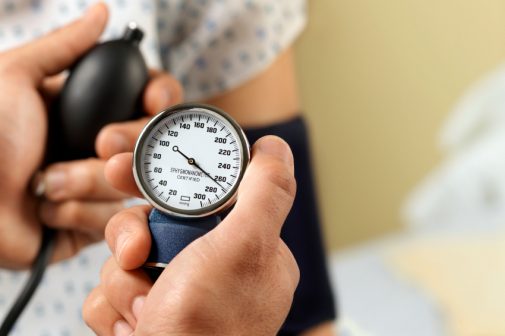Why healthy adults may have high blood pressure and not know it

Does a visit to the doctor’s office cause you anxiety? If so, you’re not alone. In fact, it has long been thought that it can also cause one’s blood pressure to spike, a condition known as white coat hypertension, often leading physicians to discount a borderline high blood pressure reading in young healthy adults.
But a new study suggests doctors may be missing a significant number of patients that should be monitored because they discount the borderline readings.
“Physicians know many patients don’t like coming in, so if their blood pressure reading is a little high, some may attribute the elevated level to white coat syndrome,” says Dr. Marlon Everett, a cardiologist at Advocate Trinity Hospital, in Chicago.
That could be a mistake, according to Stony Brook University and Columbia University researchers. They found that white coat hypertension is actually less common than previously thought, and masked hypertension, a condition where blood pressure readings at the doctor’s office are lower than other times of the day is actually more common.
The study involved 888 healthy men and women with an average age of 45. They wore a portable blood pressure cuff for 24 hours as to monitor their ambulatory (around-the-clock) blood pressure. Multiple readings were also taken during three visits to a clinic to represent measurements taken in a doctor’s-office setting.
When the researchers compared those numbers, they found that ambulatory blood pressure tended to be higher than their in-office averages, not lower. On average, ambulatory systolic readings, the number that reflects pressure in the arteries when the heart contracts and pumps out blood, were 7 points higher than those taken in clinical settings. Diastolic readings, the bottom number that reflects pressure in the arteries when the heart is at rest, were 2 points higher. Overall, masked hypertension affected about 15 percent of all study participants, while white-coat hypertension affected only one percent.
Dr. Everett says the in-office reading provides only a snapshot of the patient’s health and risk for cardiac event. He agrees with the study that more extensive monitoring should be done, especially in patients who are overweight or have other risk factors such as diabetes or high cholesterol.
“The ambulatory reading provides a much more complete picture of the patient’s health because it provides round-the-clock readings,” he says.
He cautions, though, as more thorough blood pressure reports are expensive, more tedious and harder to sell to patients who are required to wear a monitor 24 hours a day. Still, the study gives physicians a peek behind the mask of false readings.
“If we can convince more patients to participate with in-depth monitoring, we may be able to diagnose hypertension earlier and possibly prevent complications such as heart attacks and strokes, and possibly save more lives,” Dr. Everett says.
Related Posts
Comments
About the Author
health enews staff is a group of experienced writers from our Advocate Health Care and Aurora Health Care sites, which also includes freelance or intern writers.

















